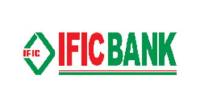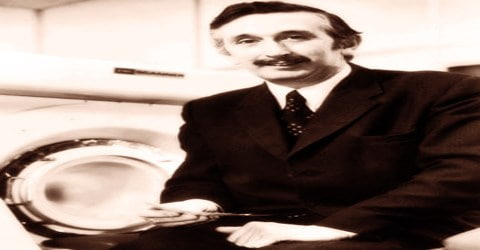Business Overview of IDLC Finance Limited
The development of financial market has been receiving heightened attention from the policy-makers in recent years. One explanation lies in the fundamental shift of development strategy reflected in the nearly universal embrace of the private sector as an engine of economic growth. The governments in both developed and developing countries, the international financial institutions which exert tremendous influence on the policy-making apparatus of developing countries and, to a great extent, the intelligentsia have all joined together as ardent advocates of private entrepreneurship.
IDLC Finance Ltd, a leading financial institution of the country achieved significant growth in all areas of business up to 3rd quarter of the year 2009. IDLC began its operation in 1985 as the first leasing company in Bangladesh. In 1995, IDLC was licensed as a Financial Institution by the country’s central bank and during the last two decades, the company has grown in tandem with the country’s growing economy.
The company’s wide array of products and services range from retail products, such as home and car loans, corporate and SME products including lease and term loans, structured finance\ services ranging from syndications to capital restructuring and capital market services.
The company also strengthened its presence in the country’s growing stock market with launching a subsidiary-IDLC Securities Limited-which is offering full-fledged brokerage service for retail and institutional clients.
ILDC FINANCE LIMITED
IDLC Finance Ltd commenced its journey, in 1985, as the first leasing company of the country with multinational collaboration and the lead sponsorship of the International Finance Corporation (IFC) of The World Bank Group. Technical assistance was provided by Korean Development Leasing Corporation (KDLC), the largest leasing company of the Republic of South Korea.
The unique institutional shareholding structure comprising mostly of financial institutions helps the company to constantly develop through sharing of experience and professional approach at the highest policy making level.
IDLC offers a diverse array of financial services and solutions to institutional and individual clients to meet their diverse and unique requirements. The product offerings include Lease Finance, Term Finance, Real Estate Finance, Short Term Finance, Corporate Finance, Merchant Banking, Term Deposit Schemes, Debentures and Corporate Advisory Services.
The company has authorized capital of Taka 1,000,000,000 (10,000,000 shares of Taka 100 each) and paid up capital of Taka 250,000,000 (2,500,000 ordinary shares of Taka 100 each). IDLC has also established two wholly owned subsidiaries, IDLC Securities Limited and I, Cons Limited to provide customers with security brokerage solutions and IT solutions, respectively.
GUIDING PRINCIPLES
IDLC is a multi-product financial institution offering an array of diverse financial services and solutions to institutional and individual clients to meet their diverse and unique requirements. Following are the guiding principles that shape the organizational practice of IDLC Customer first: IDLC has grown with its customers, who are believed to be the center of all actions. As the crux of IDLC’s corporate philosophy, customer service gets the highest priority.
Innovation: IDLC has continuously introduced new financial products for meeting the needs of the entrepreneurs in a complex & challenging business environment. The concept of innovation is in-built into the working culture.
Professional Knowledge: IDLC is staffed with qualified professionals and innovative minds in the country. Years of operational experience, large industrial database and competent workforce have gives them unparalleled advantages.
Professional ethics: The professional at IDLC maintain the highest degree of financial and business ethics in all transactions with the clients. Over the last two decades, IDLC have put in bets efforts to meet the expectations of the clients and investors.
One stop solution: Work at IDLC begins with the idea generation, and then goes on into the feasibility study followed by arrangement of financing to implement the project. IDLC advises the clients, finance them and even arrange financing for them via different financing modes, namely: lease financing, term loan, bridge loan, syndication, bridge loan, syndication, ordinary shares, preferred shares and debentures.
Vision: Become the best performing and most innovative financial solutions provider in the country
Mission: Create maximum possible value of all the stakeholders by adhering to the highest ethical standards
For the Company: Relentless pursuit of customer satisfaction through delivery of top quality services
For the Shareholders: Maximize shareholders’ wealth through a sustained return on the investment.
For the employees: Provide job satisfaction by making IDLC a center of excellence with opportunity of career development.
For the society: Contribute to the well-being of the society, in general, by acting as a responsible corporate citizen.
Goal: Long term maximization of Stakeholders’ value
Corporate Philosophy: Discharge the functions with proper accountability for all actions and results and bind to the highest ethical standards.
PRODUCTS AND SERVICES
To ensure steady and long term growth as well as to sharpen its competitive edge in a changing and challenging business environment, IDLC always endeavors to diversify into other financial services which have long term prospects. In 1997, it expanded its range of services by introducing Housing Finance and Short Term Finance, which have broadened its customer base and have contributed significantly to IDLC’s growth and profitability. In early 1999, after getting license of Merchant Banking from Securities and Exchange Commission, IDLC started its operation of underwriting, issue management, corporate financing and other investment banking related services. The products and services are as follows
- LEASING
Assets are leased to clients on predetermined rental basis for a fixed term with a purchase option at the end.
- TERM LOAN
The customers are offered loan facilities for a determined term at a negotiated rate.
- EQUITY FINANCING
IDLC invests money into equity of both publicly traded and non-traded companies for dividends and capital gain.
- INTER CORPORATE DEPOSIT (ICD)
This disbursement scheme is offered to clients under two variations:
(a) Non- Revolving ICD which consists of single disbursement of funds
(b) Revolving ICD where multiple disbursements and collections take place
- WORK ORDER/ PURCHASE ORDER FINANCING
The clients are financed against their work order or purchase order on a revolving basis.
- FACTORING
Under this scheme, IDLC finances receivables of supply of goods or delivery of services on credit to help the clients realize the maximum portion of their payment soon after they have made the delivery to the buyer. The payment is collected from the customers and the balanced amount is re-reimbursed to the clients.
- SYNDICATION
IDLC helps to raise fund for clients with huge financial requirement through syndication and also help them with the documentation, execution and administration of the syndicated finance.
- SECURITIZATION
IDLC sell financial instruments of organizations in local financial market backed by their asset/cash flows such as loan, lease etc.
- BRIDGE FINANCE:
This refers to short-term finance (maturity of not more than 12 months) in anticipation of immediate long term financing such as public issue, private placement, syndication, loan, lease, debenture, etc.
- CAP INVEST
IDLC maintains a non-discretionary portfolio account for clients where they have absolute power to make investment decisions. the portfolio manager provides margin loan to clients and also prepares the list of securities in which they can invest.
- DEPOSIT SCHEMES
IDLC offer different variety of deposit schemes for clients.
- Cumulative Term Deposit
- Annual Profit Term Deposit
- Monthly Earner Deposit
- Double Money Deposit
- CAR LOAN
Term loan are offered to clients for acquiring car, brand new or reconditioned, for their personal use and the ownership is transferred on loan repayment.
- HOME LOAN
IDLC offers loans to purchase apartment to individuals for their personal use
- REAL ESTATE FINANCE
IDLC finances clients to construct house, renovate and extend house, for office chamber/space for professionals etc. under two different schemes:
- Developer’s Finance Scheme
- Corporate Finance Scheme
- PRIVATE PLACEMENT
IDLC places the shares/debenture with both domestic and overseas investors (institutions or individuals) on private placement basis.
- UNDERWRITING
IDLC makes a univocal and irrevocable commitment with an issuing company to subscribe to the securities of that company when the existing shareholders or the general public do not subscribe to the securities offered to them. The different types of underwriting offered are:
- Initial Public offering (IPO) of common stock, preferred stock, debentures etc.
- Right Issue
- Underwriting of public securities-loan, lease, debenture
- ISSUE MANAGEMENT
Under this activity, IDLC plan, coordinate and control the entire issue activity of clients and direct other agencies for successful marketing of securities.
- FINANCIAL ADVISORY SERVICE
IDLC help the existing venture or a new venture by providing various advisory services such as corporate counseling, project counseling, capital restructuring, financial engineering etc.
- MERGERS AND ACQUISITIO
IDLC help clients to search for the right organization, evaluate the concern based on different types of analysis and select the method of m & a to make it a profitable deal.
- TRUSTEESHIP MANAGEMENT
We act as trustee for the debenture holders by accepting security created by the company and take action to safeguard their interest and enforce their rights.
DIVISIONS AND DEPARTMENTS
The organization includes divisions which mainly deal with the products and services and departments which support in the operating activities. The divisions are the
- Corporate
- SME
- Merchant Banking
- Personal Investment
- Factoring
- Structured Finance
- Operations
The departments include
- Credit Risk Management (CRM)
- Treasury
- Human Resource
- Accounts and Taxation
- Administration and PR
- Operational Risk Management (ORM)/Internal Control Compliance(ICC)
- Special Asset Management(SAM)
SWOT ANALYSIS
The SWOT analysis for IDLC can be described as follows:
Strengths
- Reputation and brand image: IDLC is well-reputed company and has developed a brand image that is recognized by the customers. IDLC is an international joint-venture company and its shareholders have long records of sustainability and reliability in their respective fields. IDLC is one of the esteemed names in financial market of Bangladesh. Since 1985, IDLC has marked its journey through introduction of various innovative products and thus meeting the needs of large corporate clients.
- Product portfolio: IDLC has diverse product portfolio for customers which made them second to none in Non-Banking Financial Industry.
- Quality Customer Portfolio: IDLC has a Credit Risk Management department of Multinational standard which enables the company to maintain a quality customer portfolio.
- Human Resources: The Company has competent management team. The over all work force of the company is considered as key resources for the organization. IDLC personnel are motivated, competent, energetic and creative. The company provides utmost support in terms of both technical and moral.
- Operational efficiency: IDLC provides customized solution to their customers to adjust their need. The company processes the loan applications quickly and smoothly. The sanction and disbursement of the loans are hassle-free.
- Employee Empowerment: At IDLC decision-making is free flowing and transparent. Every appraiser is given ample opportunity to exercise his/her creativity in accommodating a customer. Approvers are open for any discussion and sanction is largely based upon recommendation of the appraisers. The open and free flow of communication ensures clarification of any queries in no time–from any level of hierarchy. Reasonable suggestions are not only welcome but are highly appreciated. Effective suggestions by the employees are immediately set for action. This flexibility has helped IDLC a lot in shaping up its operations into a level of efficiency and to be an excellent performer in case of loan recovery.
Weaknesses
- High Cost of fund: IDLC as any other NBFIs have high cost of fund in comparison to banks. As NBFIs can take deposit for less than one year from any individuals as banks can do, the deposit base of IDLC is not strong enough to reduce the average cost of fund.
- More Focus on Volume: Although IDLC has department called Credit Risk Management to monitor the asset quality of the company, still the company sometimes for the sake of profit and past relationship provide loans to customers who at the end hamper the portfolio quality of IDLC.
- Too Much Diversification: Too much diversification of product and services offering hamper the focus on the core services of the organization.
- Less People in Liability Marketing: IDLC still employs lesser number of workforces for the aggressive liability marketing in comparison to banks and NBFI like DBH.
Opportunities
- Continuity of Liberalization: Government has continued to liberalize the economy towards more market orientation. This encouraged both local and foreign investors to invest in potential sectors. The privatization plan of government is likely to have positive impact on industrialization.
- Foreign Investment in Prospective Sectors: In recent days foreign investment in the various prospective sectors has increased phenomenally. This creates a good opportunity for all financial institutions to enter in the booming new sector.
- Local banks inefficiency: One of the major reasons for thriving of leasing company in Bangladesh is local banks inefficiency of providing project loan. This phenomenon still persists.
Threats
- Threat from banks: In recent times banks are also entering into leasing business which is generally considered as functions of Non-Banking Financial Institutions.
- Regularity control of government: The legal framework of Bangladesh is relatively weak. Lack of effective foreclosure laws and manual land recording system creates possibility of forgery and disputes. This may hinder the loan recovery from the defaulters.
CONCLUSION
To conclude the report, it is imperative to mention that default clients have been a major problem for the Non Banking Financial Institutions for long and the financial institutions have been trying to minimize the default problem all along. The central bank of Bangladesh has been striving to assist the financial institutions to get out of the default problem and formulating policies for that purpose. As a continuance to this, Bangladesh Bank has been providing directives when and where it seems to be necessary.
In Bangladesh many business organizations are still facing problems in the functioning of smooth business operations and moreover they concentrate on making profit more than their safety as a result of this they sometime get out of safety caution to absorb the industry sock.
Therefore fall in to loss and sometimes get liquidated. The consequence of this is that NBFIs do not get their due amount in time which is a big and foremost risk to the organizations. To overcome this, a very important factor to which risk weights have to be raised is the past default behavior of the borrowers. From interviews with the higher management of IDLC, who are much knowledgeable in this area have opined that one the most important factors that can be used to predict the future payment performance of the borrower is his character regarding repayment of his borrowed fund.
Another critical matter is that the financial statements of the business organization in fact contain manipulated data. So the analysis of such statements leads to wrong and faulty conclusion. This problem can be solved by judging the financial statement by individual amount specially which will provide information for the beneficiary of the NBFIs.
Also, law enforcement needs to be stronger and faster so that the willful defaulters can be punished for their defaults promptly. This will also cause the genuine business people to be more cautious when availing finance from financial institutions. The CIB database is a good start in this respect and has served to improve the overall loan repayment situation by the borrower.
In the end, it can be remarked that the central financial authority as well as all the financial institutions have to continuously analyze the overall environment, economic, social, business, cultural and so on. Depending on this, they have to improve their risk evaluating procedure.
















